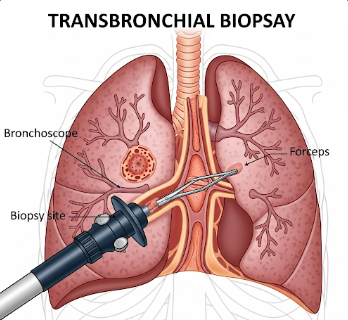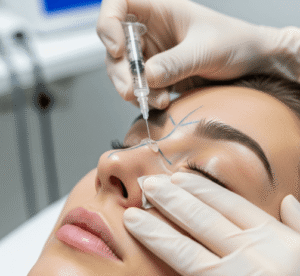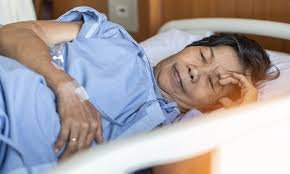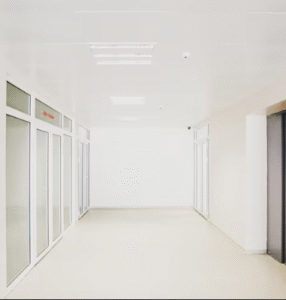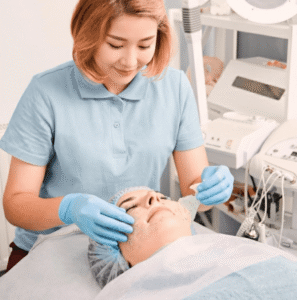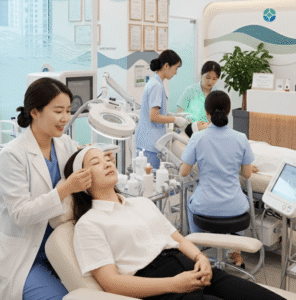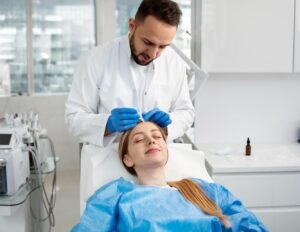Overview
A transbronchial biopsy is a medical procedure used to obtain small samples of lung tissue for diagnostic purposes. It is performed during a bronchoscopy, in which a flexible tube with a camera (bronchoscope) is inserted through the nose or mouth, down the windpipe, and into the lungs. Tiny instruments are then used to collect tissue from the lung or surrounding lymph nodes.
In Korea, transbronchial biopsy is widely available in advanced pulmonary and thoracic centers. It plays a vital role in diagnosing lung cancer, infections, sarcoidosis, interstitial lung diseases, and unexplained lung abnormalities. With the use of endobronchial ultrasound (EBUS) and high-resolution imaging, Korean hospitals provide highly accurate and minimally invasive diagnostic procedures.
What is a Transbronchial Biopsy?
A transbronchial biopsy is typically performed when abnormal findings appear on chest X-rays or CT scans. It helps doctors determine the cause of lung disease and guide treatment.
Common reasons for a transbronchial biopsy include:
- Suspected lung cancer or tumors
- Pulmonary infections (e.g., tuberculosis, fungal infections)
- Interstitial lung disease
- Sarcoidosis or other granulomatous diseases
- Unexplained pulmonary nodules or shadows
What are the Benefits?
✅ Provides a minimally invasive alternative to surgical lung biopsy
✅ Helps establish a definitive diagnosis for lung conditions
✅ Assists in planning targeted treatments
✅ Can be combined with endobronchial ultrasound (EBUS-TBNA) for lymph node sampling
✅ Widely available in Korea with advanced imaging support
Procedure Details
1) How should I prepare for a Transbronchial Biopsy?
- ✦ Fasting: No food or drink for 6–8 hours before the procedure
- ➤ Medication review: Inform your doctor about blood thinners, heart medicines, or allergies
- ✦ Blood tests: To check clotting function before biopsy
- ➤ Arrange transportation: Sedatives are usually given, so you should not drive afterward
2) What happens during the procedure?
- ✦ Performed under local anesthesia with sedation (sometimes general anesthesia)
- ➤ A bronchoscope is gently passed into the airways through the mouth or nose
- ✦ The doctor uses forceps or a needle to collect small tissue samples from the lungs or lymph nodes
- ➤ If EBUS is used, ultrasound guides precise sampling
- ✦ The procedure usually lasts 30–60 minutes
- ➤ Breathing, heart rate, and oxygen are monitored continuously
3) What happens after the procedure?
- ✦ You will be monitored for a few hours to ensure stable breathing and no bleeding
- ➤ Mild sore throat, cough, or hoarseness may occur temporarily
- ✦ Results usually take a few days (pathology and lab analysis)
- ➤ If cancer or infection is detected, treatment planning begins immediately
- ✦ In Korea, reports are often integrated with multidisciplinary lung cancer teams for faster care decisions
Risks / Benefits
Possible Risks:
- Mild bleeding in the lungs
- Temporary cough or throat discomfort
- Pneumothorax (air leak in lung, rare)
- Infection (rare)
- Reaction to anesthesia or sedation
Benefits:
- Provides tissue for accurate diagnosis
- Avoids the need for major surgery in many cases
- Can detect cancer, infections, or inflammation
- In Korea, advanced imaging and skilled specialists reduce complication rates
Recovery and Outlook
- ✦ Most patients go home the same day or after an overnight stay
- ➤ Avoid strenuous activity for 24 hours
- ✦ Recovery is usually quick, with only mild cough or discomfort
- ➤ Outlook depends on underlying diagnosis (e.g., cancer, infection, sarcoidosis)
- ✦ In Korea, test results are reviewed by multidisciplinary lung specialists to ensure rapid treatment decisions
When To Call the Doctor
Seek urgent medical care if you experience:
⚠ Severe chest pain
⚠ Shortness of breath or difficulty breathing
⚠ Heavy coughing up of blood
⚠ High fever or chills
Best Korea Option / Process
Korea is a leading destination for lung disease and cancer diagnosis, offering:
- ✦ State-of-the-art bronchoscopy suites with advanced imaging
- ➤ EBUS-guided transbronchial needle aspiration (EBUS-TBNA) for precise biopsy
- ✦ Highly experienced pulmonologists and thoracic surgeons
- ➤ Integrated cancer centers with rapid pathology services
- ✦ English-speaking international patient services
- ➤ Short waiting times and comprehensive diagnostic packages
Highlights of Transbronchial Biopsy in Korea
- ✅ Minimally invasive diagnostic test for lung disease
- ➤ Helps diagnose cancer, infections, and inflammatory lung conditions
- ✅ Safer and less invasive than surgical biopsy
- ➤ Korea offers EBUS-guided procedures for precision and safety
- ✅ Fast, reliable results with integrated treatment planning

